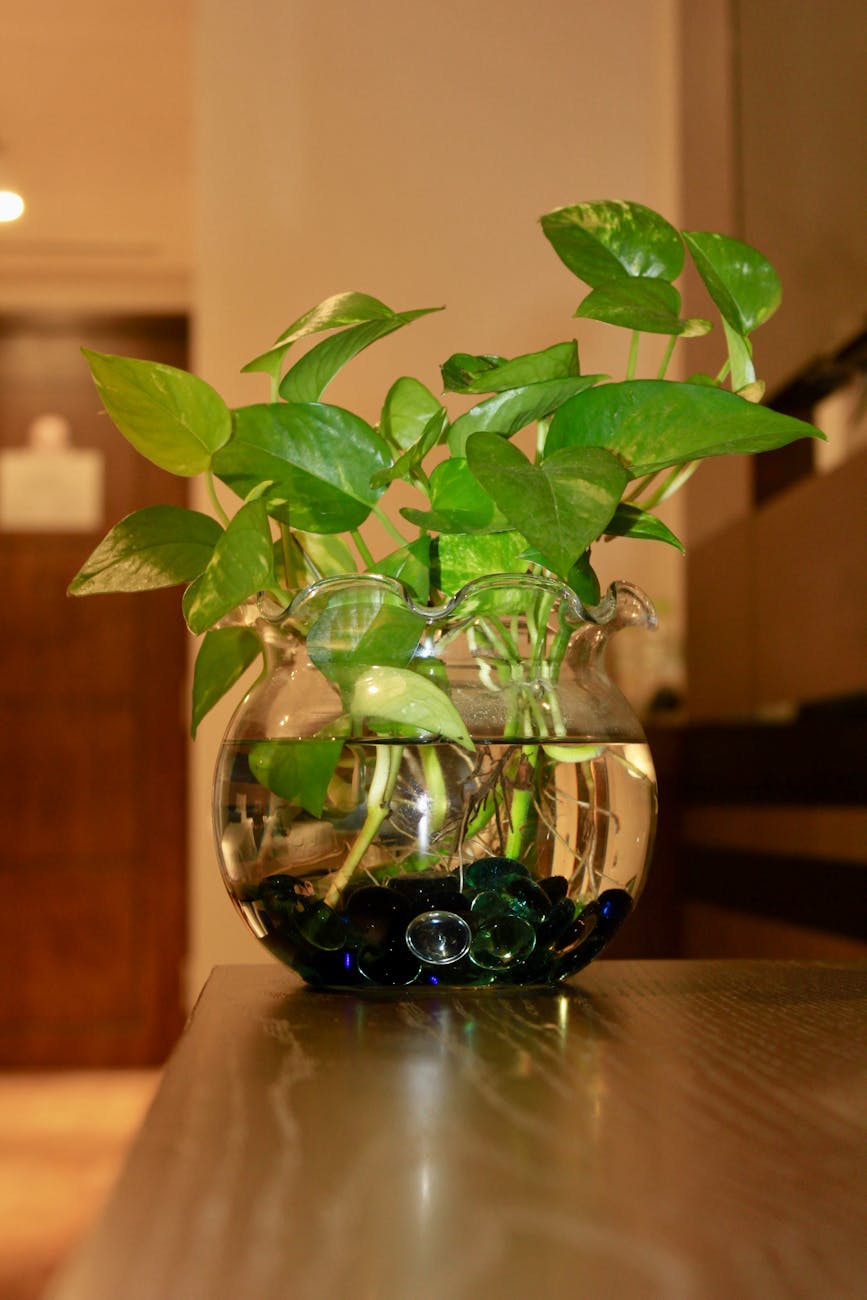Title: Plants That Grow in water.
Discover 10 easy-to-grow plants that thrive in water. Learn how to care for them and their practical uses, from air purification to fresh herbs for your kitchen.
10 Plants That Grow in Water and How to Use Them
Introduction
Gardening doesn’t always require soil—many plants can grow happily in just water! If you’re looking for a low-maintenance way to bring nature indoors, water-grown plants offer an easy, mess-free solution. Whether you’re short on space or simply prefer the aesthetics of a clean, modern setup, growing plants in water adds beauty and function to any room. Here’s a list of popular plants that grow in water and how you can incorporate them into your home or daily life.
See Also
- Classification of plants and characteristics
- Pollination in plants, types, agents and differences
- Respiratory systems in plants and mechanism

1. Pothos (Epipremnum aureum): Pothos is a beginner’s dream. This resilient vine roots quickly in water and can survive in low light. Just cut a vine below a leaf node, place it in a glass of water, and watch it flourish.
Uses: Pothos is an excellent air purifier, absorbing indoor pollutants like formaldehyde. Its long, trailing vines are perfect for decorating bookshelves or hanging in corners.
2. Lucky Bamboo (Dracaena sanderiana): Although it’s not true bamboo, Lucky Bamboo is known for its adaptability to water growth. Be sure to use distilled or filtered water, as it’s sensitive to chlorine.
Uses: In Feng Shui, Lucky Bamboo symbolizes good fortune and prosperity, making it ideal for office spaces or entryways. Its sleek, upright form also suits minimalist or Zen-inspired decor.
3. Philodendron: Philodendrons are incredibly easy to propagate in water, especially the popular heartleaf variety. They grow fast and don’t require frequent water changes.
Uses: This lush green plant also purifies the air and can add a fresh, vibrant feel to living rooms, kitchens, or bathrooms.
4. Spider Plant (Chlorophytum comosum): Spider plants grow baby “spiderettes” that can be snipped and rooted in water. They do well with minimal effort, making them perfect for those new to plant care.
Uses: Spider plants are natural air purifiers and look beautiful in hanging baskets, where their cascading leaves can be displayed to full effect.
5. English Ivy (Hedera helix): English ivy adapts quickly to water growth and will develop long, graceful vines. Clip a piece with several nodes, place it in water, and watch the roots form.
Uses: Ideal for vertical gardening, English ivy can be trained along a trellis or allowed to spill over shelves. It also reduces indoor mold spores and toxins, improving indoor air quality.
6. Mint (Mentha spp.): Mint is a vigorous grower that roots easily in water. A cutting will quickly develop new roots and leaves, providing a constant supply of fresh mint.
Uses: Mint is a kitchen essential for adding flavor to dishes, teas, and cocktails. It also acts as a natural pest repellent, making it a useful addition to patios or windowsills.
7. Basil (Ocimum basilicum): Basil thrives in water, especially in the warmer months. Keep a cutting in a sunny spot, and it will continue to grow and produce fresh leaves.
Uses: Fresh basil is a staple in many cuisines, especially for making pesto or garnishing pasta dishes. Its fragrant leaves can also be used to create a soothing atmosphere in your kitchen.
8. Peace Lily (Spathiphyllum): Though typically grown in soil, peace lilies can adapt to water after being rinsed of dirt. They prefer indirect light and will bloom occasionally, adding a soft touch to any space.
Uses of peace lily: Peace lilies are known for their air-purifying properties, removing toxins like benzene and formaldehyde. Their elegant white flowers and lush foliage make them a striking centerpiece for tables or desks.
9. Wandering Jew (Tradescantia zebrina): Wandering Jew is a tough plant that grows well in water. Its vibrant, purple-striped leaves add color and life to any indoor space.
Uses: This plant is perfect for hanging planters, where its colorful vines can dangle and brighten up any room. It’s also incredibly easy to care for and can tolerate low light conditions.
10. Coleus: Coleus is known for its vibrant foliage and can easily root in water. Simply snip a cutting, place it in water, and enjoy its beautiful colors as it grows.
Uses: Coleus adds a striking splash of color to any decor. Its dramatic, multicolored leaves make it a showstopper on window sills or as a focal point in arrangements.
Tips for Growing Plants in Water
- Change the Water Regularly: Fresh water prevents bacteria buildup and keeps your plants healthy. Change it at least once a week.
- Use Transparent Containers: Clear glass jars or vases not only look chic but also let you observe root development, adding a touch of nature to your decor.
- Light Requirements: Most water-grown plants prefer indirect sunlight. Avoid placing them in direct sun, which can heat up the water and stress the plants.
- Fertilizing: While many plants grow well in plain water, a few drops of liquid fertilizer every couple of weeks can encourage stronger growth.
Conclusion on plants that grow in water
Growing plants in water is a simple, low-maintenance way to bring nature indoors while reducing the need for soil and frequent watering. From air-purifying species to herbs for your kitchen, these plants offer beauty and functionality.
Whether you’re looking to add greenery to your home, improve air quality, or enjoy fresh herbs, water-grown plants provide endless possibilities. Give it a try, and you’ll find yourself hooked on this soil-free gardening method!
